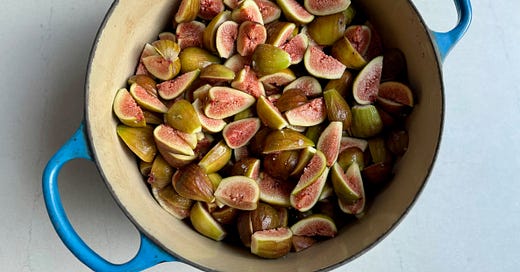As I’ve gotten older, I’ve gotten better at accepting the fact that there are some things in life that I’ll never be good at. Downhill skiing? Absolutely not. Becoming fluent in another language? I think I’m 10 years too late. Running a marathon? Umm, hell no. Long division? Ha! In my dreams.
But. But! As I settle into the groove of my mid-thirties, I’m also finding that even if I’m not particularly *good* at something, that’s no reason not to try. Honestly, this realization is a major departure from my very type-A, straight-A student personality – but in this season of life with two young babies and very little time for myself, I’m craving any opportunity to grow, expand, and learn a new skill… even if that means I’ll suck at it for a long, long time.
In case you missed it, last week I shared that I’m embarking on a new project to revamp the second floor of our barn into a creative studio of sorts for myself. Currently, my “office” is a mess of papers spread out haphazardly on our kitchen counter, and it’s not exactly the most inspiring (or productive) place to work. One of the reasons I’m so excited about this barn glow-up is because it will give me the space to learn (and be bad at) some new skills / hobbies that I’ve been itching to dig into for years. I want to learn to use a sewing machine and make wonky quilts! Paint crappy landscapes! Write bad short stories! Play sub-par guitar! What a revelation to realize that you don’t have to be the best at something to enjoy it. And what a gift to have the space (both the literal space and the time) to be a beginner at something again.
Earlier this week, my team and I pulled on our gloves and dust masks and gave the second floor of our barn the first proper cleaning that she’s had in… maybe a decade? We cleared out scraps of wood, rusty wire, a shocking number of dead birds, hundreds of empty wasp nests, rusty nails, and about 100 lbs of dirt. We still have a way to go, but under all the grime, there’s a pretty special space that’s taking shape.
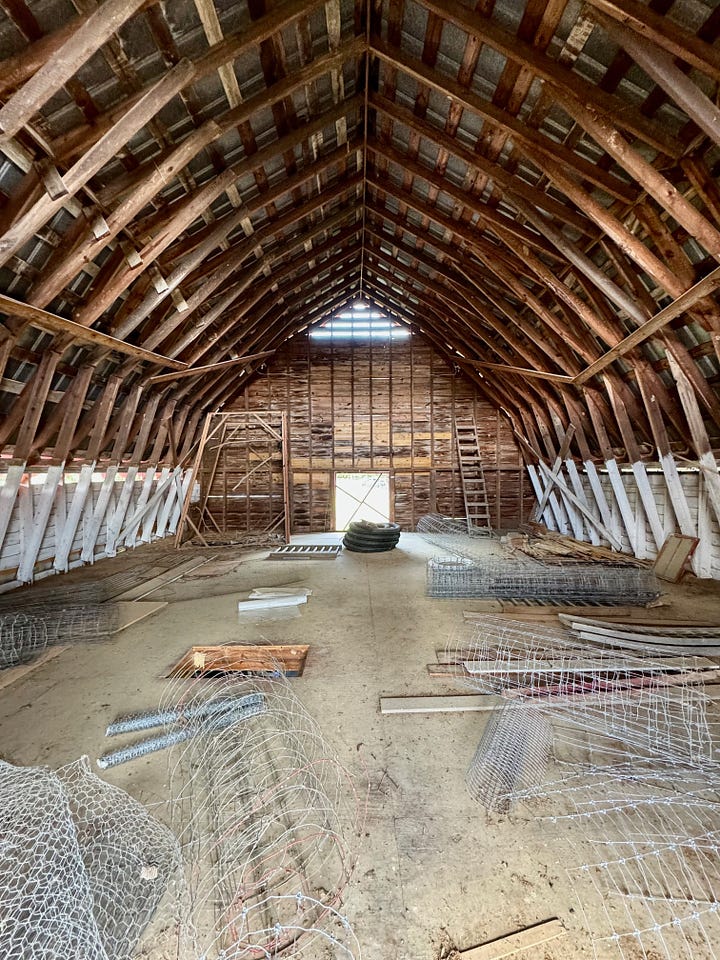
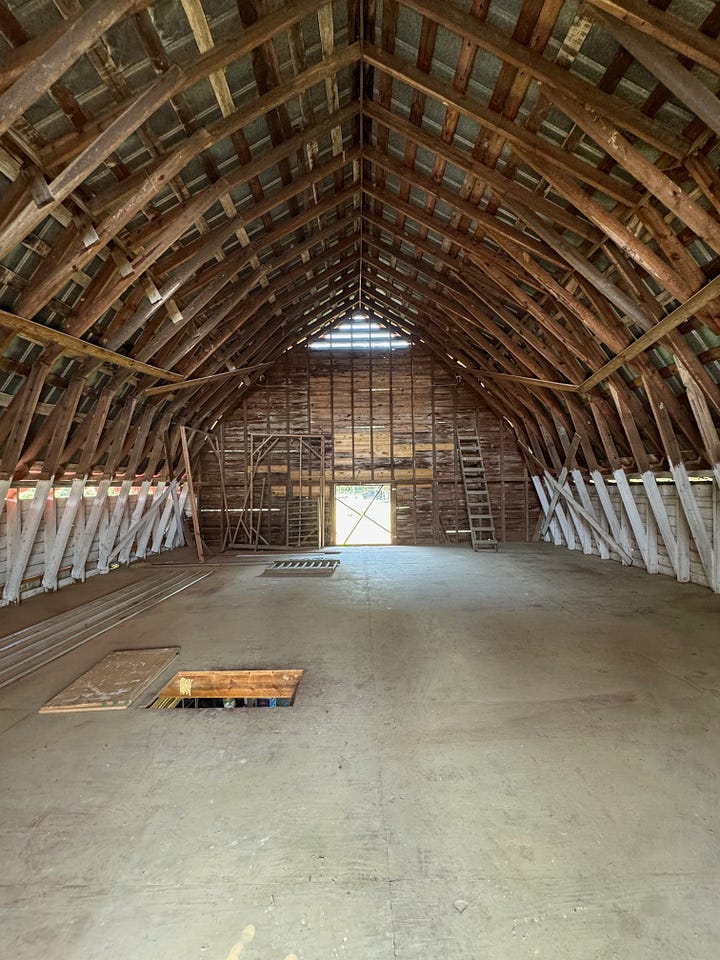
I’ve spent way too much time this week combing through Facebook Marketplace and Craigslist, and so far I’ve gotten an awesome giant rug and some cool light fixtures, and I’m currently looking (my husband Matthew would say obsessing) for the perfect desk / work table. Hopefully by next Friday, this place will look way less empty and a lot more cozy… stay tuned!
What about you? I’d love to know what skill/hobby you’ve been wanting to try, even if you might be terrible at first?
Need some culinary inspiration for the weekend? Here’s my weekly round up of seasonal recipes from around Substack (and my ever-growing recipe index) to help you eat like a farmer:
Roasted Tomato & Basil Soup from yours truly :)
Labor Day Cassoulet from
/Creamy Courgette (Zucchini) Gnocchi from
/
Keep reading for this week’s new recipe – homemade fig jam – available for paid subscribers.
Speaking of things I’m bad at… for the life of me, I CANNOT grow fruit trees.
I’ve gotten pretty darn good at growing vegetables, but a fruit tree? Hopeless. Over the years we’ve planted apple trees, pear trees, paw paws, mulberries, and countless fig trees, and let’s just say none of them are thriving (and most aren’t even surviving). I’ve yet to get a single fig from any of the trees we’ve planted, so it’s a good thing that our good friends and neighbors have a slew of massive fig trees, and every year around this time we’re the lucky recipients of heavy bags of ripe, juicy, fabulous figs. Which means NOW is the time to make one of life’s true joys and culinary delicacies: fig jam.
At some point I’ll write a FULL tutorial on all things making jam, but for the sake of time/attention spans, today I’m just going to share one of my most valuable pointers.
When it comes to making jam, it’s important to have the right fruit / sugar / acid ratio (I don’t typically use pectin). So here’s a very basic guide, broken into two categories – one for high acid fruits and one for low acid fruits.
HIGH ACID FRUIT
High acid fruits: raspberries, strawberries, grapes, sour apples, any kind of citrus
Find your ratio: Weigh your fruit, add half that weight in sugar. For every 2lbs of fruit, use 1 ounce (2 tablespoons) of lemon juice
For example:
2 lbs fruit
1 lb sugar
1 ounce (2 tablespoons) lemon juice
LOW ACID FRUIT
Low acid fruits = figs, sweet apples, blueberries, peaches, pears, nectarines, sweet cherries
Find your ratio: Weigh your fruit, add half that weight in sugar. For every 2 lbs of fruit, use 2 ounces (4 tablespoons) of lemon juice
For example:
2 lbs fruit
1 lbs sugar
2 ounces (4 tablespoons) lemon juice
Okay, hopefully I didn’t lose you there, because there’s one more important thing! When you make jam, you don’t *have* to process the jars in a hot water bath. The process of canning makes the jam shelf stable (and the jars will last a year or more unopened), but if you don’t want to bother with canning, you can still make delicious jam and just immediately store it in your fridge (where it should keep for 3 months). In the recipe below, you’ll see that I give instructions for making the jam using both methods (ie canning vs. not canning). Hopefully this helpful, and I promise to share a much more in-depth jamming/canning guide in the weeks to come.
Keep reading for the full recipes (and a handy 1-page PDF for easy printing).
Become a paid subscriber to access today’s recipe (free subscribers get access to recipes on the 1st Friday of the month). As a paid subscriber, you’ll also get access to my full recipe archive, gardening guides, plus bonus content and join our private community chats.
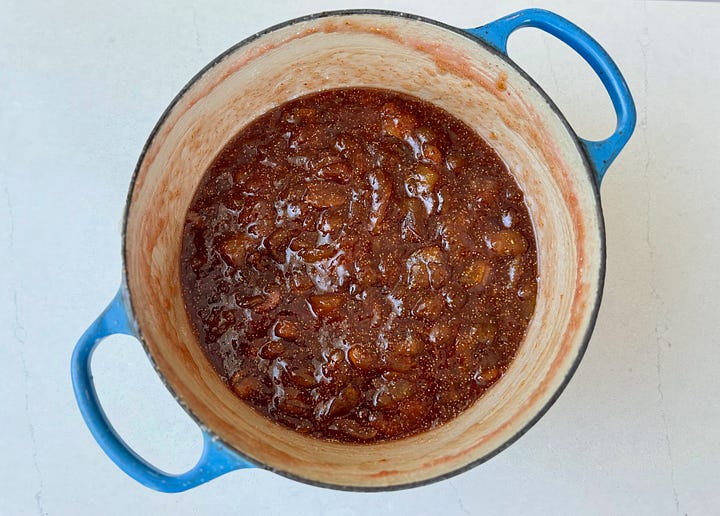
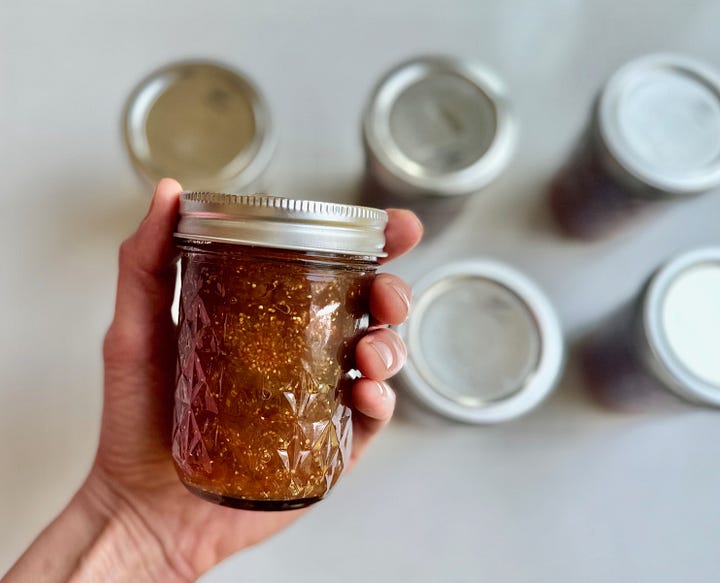
Fig Jam
Makes 7-8 half pint jars (or about 4 pints)

